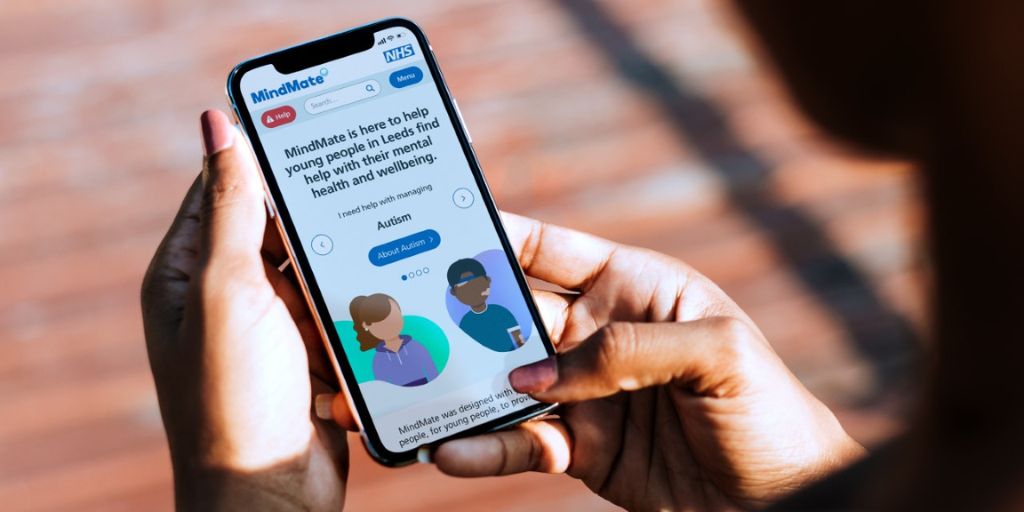
There is much talk about ‘patient empowerment’ in the future of healthcare, where patients themselves can take better control over diagnosis, access actionable data and harness medical management. This shift has arisen not only from a desire for the user to control their own health but because services are so stretched that there’s simply no choice. This calls for digital services to be fit for purpose — that is, navigable, informed and able to help people make the right choices easily.
Positive changes are happening. Regulations around the design of buildings and public spaces, for example, have improved accessibility to some extent, but it is an issue that continues to demand thoroughgoing reform. In product design, technology companies like Apple are actively pushing accessibility to the forefront of design and their latest advertising campaign is a testimony to their commitment. In it, the brand displays just how empowering thoughtfully designed interfaces can be.
The physicality of built environments and products makes it easier to discern where accessibility problems lie. But what about mental accessibility, where the need is invisible to the naked eye? 1 in 6 people report experiencing a common mental health problem in any given week in England, which means that a huge proportion of the population access resources – both online and offline – while struggling with their mental health. This is an important fact that must be considered carefully when designing more inclusively.
Addressing body and mind for inclusive design
Yet humans are complex, emotional and sometimes irrational creatures. Studies, for example, show that we have a propensity for delusion and optimistic biases that go against health and wellbeing. The big design challenge lies in resolving some of the most ingrained human foibles (such as our tendency to deny or play down the reality of our illnesses and mortality) which can scupper digital resources and prevent them from having a meaningful social impact on global communities.
Illnesses, both physical and mental, may diminish our capacity to seek and access help digitally. Disabilities, homelessness, financial difficulty, poor education and language divides may provide further barriers to accessibility. Mental states can affect cognition and the ability to navigate resources, which can become a confusing, shaming and anxiety-provoking experience.
Design plays an intrinsic role in ensuring that interface experiences do not exclude, exacerbate anxieties, re-traumatise or ignore how human needs are connected. After all, empathetic design, particularly in the context of healthcare, has significant potential to drive positive change.
To be effective, solutions must be designed to cater for a whole spectrum of physical and emotional needs so there are no barriers to accessibility. Perhaps one of the reasons why this has been slow to translate into tangible design is the under-representation of people with different access needs within the design industry itself. Diverse teams generate inclusive thinking. At the same time, solutions must also respect our innate resistance to admit physical or emotional vulnerability. Never has this been more important than in the mental health and wellness space where inclusive design starts with the inclusive thinking of the designers themselves.
Co-design for empathic thinking
The Covid-19 pandemic demanded that the NHS’s digital platforms become fit for purpose as people increasingly turned to its vast resources for reassurance and guidance on how to manage their health and treatments remotely. NHS Digital also required an overhaul to be as universally navigable as possible to support the distribution of accurate data and information to all corners of the wider NHS, its partners, and government. Improving the experience to become more human-centric involved careful reappraisal of the language, descriptors, layout, typography, colour palette, imagery and structure of information used; every single touchpoint created an opportunity for cohesive, meaningful and empowering engagement.
Right from the onset, our designers needed to stand in a position of empathy to inform thinking around functionality, accessibility and interactivity. This meant co-designing with the NHS’s internal teams and data experts to draw upon their insights, research and vast experiences of working in a very user-centred way. In a universal sense, however, all design teams should be doing more than just co-designing with design teams; they should be liaising closely with a diverse range of end users. Only then will we be able to achieve a fully inclusive process that results in truly inclusive design.
Whenever people seek help and try to access medical resources, mindset and levels of engagement are significantly impacted. Fear of getting things wrong: from clicking the wrong button and getting lost because of unclear signposting to accidentally typing in wrong information can provoke anxiety — as does navigating material with poor eyesight and shaky hands. These scenarios can be both frustrating and humiliating. Designers need to think about the vast swathes of patients that would ultimately be discriminated against and failed because of short-sighted design and rise to this challenge.
The core tenets around inclusive design are translatable and relevant to all services but are particularly important when health management can affect an individual’s quality of life significantly. The language used in brand campaigns and interfaces demands sensitivity and empathy if messages are to resonate and if calls to action are to have an impact. No jargon and clean, clear presentation of information that does not overwhelm the viewer is therefore key to form and design.
For example, with the FGM (female genital mutilation) campaign we worked on with NHS West Yorkshire ICB and Leeds-based Blossom Clinic, it was important for our design and strategy team to talk to survivors to ensure that the narratives developed were balanced, sensitive and appropriate. By employing empathic language, we were able to engage more effectively and emotionally with survivors of FGM. While the insights gathered from this exercise inspired us to come up with the campaign’s central theme: talking is healing — it once again reinforced our belief in the power of words.
How colours are used in digital and physical health interfaces and campaigns may also influence mindset and mood, both positively and negatively. Mental health charity Mind and MindWell, the mental health resource for adults in Leeds, both use calming hues of green and blues to draw attention to key areas on their sites. It is important for interfaces to employ a trauma-informed approach to communication that is mindful of our ingrained fight, flight or freeze responses to threat — responses that can be triggered and activated easily if communication is not approached with empathy and sensitivity. Again, it is the job of designers to ensure that the verbal and visual cues used in interfaces are mindfully cast.
Designers must never lose sight of their humanity
Effective design for healthcare campaigns and products involves resolving a number of tensions: as well as being empowering to the patient, it must be non-stigmatising and unobtrusive. Awkwardly designed medical hardware may be off-putting to patients, deterring them from managing and monitoring their health outside the hospital. At worst, the design may play into our fear of death and activate our denial response. Likewise, digital interfaces must be developed in a way that promises empowerment.
Healthcare is changing course for the better because of our connected world. Illnesses and conditions that would otherwise require medical intervention in hospitals are increasingly being treated proactively by patients themselves using available technology and resources. In many instances, this is improving quality of life, enhancing independence and enabling us to medically pre-empt and manage conditions before they become a problem that requires hospitalisation.
Empowered wellness and healthcare is the future, although this may not be reassuring to those of us who seek assurances about our health via one-to-one consultation. This is why it is all the more important for designers to remain in touch with their humanity and translate this into both physical and digital worlds. This sense of humanity should be the thread which runs through all our work, especially if we wish to become key architects of inclusive, empathetic and impactful design that makes a difference to the health of our global communities.
Chris Skelton is creative director at independent brand and digital design agency Thompson.












